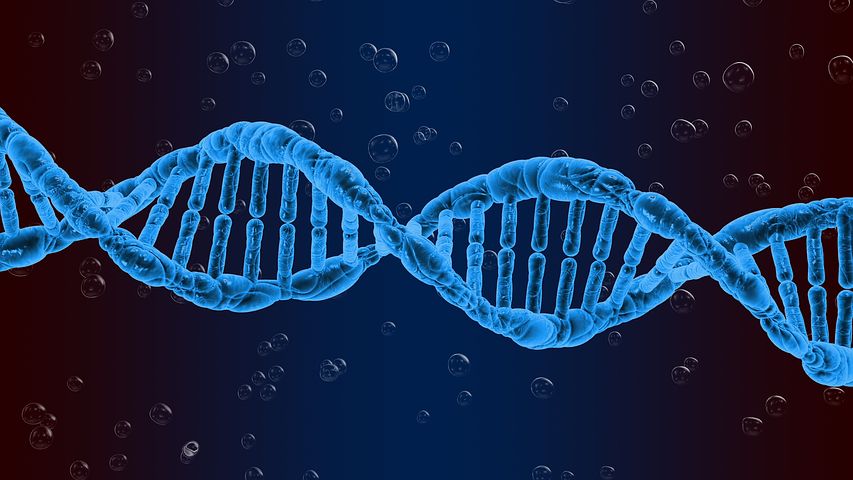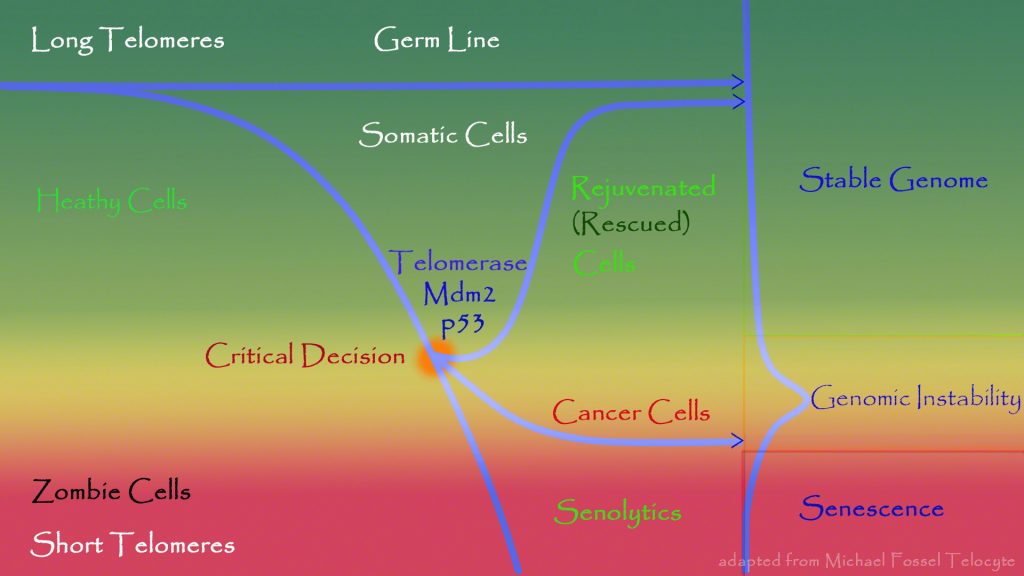
Telomeres, Telomerase and Senolytics
Telomeres, telomerase and senolytics is ushering in a new era of longevity medicine and vital health. These are exciting times.
In 1994 the first ever world conference on Anti-Aging Medicine was held in small “off the strip” hotel in Las Vegas. An exciting prospect under the auspices of American Academy on Anti-Aging Medicine (A4M). The goal of that time was to aggregate the best of medical science and information into a cohesive body of high-tech preventive medicine. With the aim of prolonging life and health span. It was a heady proposal with its share of critics. It was the beginning of a new paradigm.
So many terms have been used over the years, including Integrative Medicine, Complementary Medicine, Functional Medicine, Anti-Aging Medicine, Age Management Medicine and Longevity Medicine. They share one common goal. Improving optimal health and well-being and increasing a healthy lifespan — HealthSpan.
It is all based on optimizing physiological function and cellular health and vibrancy. Through the use of micronutrients, vitamins, minerals, hormone replacement therapy, rational and scientific approaches to exercise, our focus has always been directed toward a higher goal.
Nutritional Medicine Pioneers
There have been a series of widely acclaimed nutritional constructs. Starting with Nathan Pritikin and Julian Whitaker’s advocacy of complex carbohydrates, to Michael and Mary Eades advocacy of high-protein diets (Paleo), to Dean Ornish vegan diets, to low carbohydrate diets most successfully advocated by Robert Atkins. Enter David Asprey of Bulletproof fame with refinements and banner success. Each rock star has held center stage in their time.
So where are we today? The current consensus is a low carbohydrate, ketosis generating diet with healthy fat intake as the most beneficial pursuit. This can be elaborated elsewhere.
The Holy Grail throughout human history, has been the search for eternal youth and immortality. The Shangri-La effect. In the modern age, we have been seeking “the master controller” of aging. Does this exist? Is there one gene or one gene locus that controls aging? We are closer to some vital answers. And our efforts have increased dramatically in the last 20 years and even more so in the last 3 to 5 years.
We have shifted from Anti-aging Medicine to full Regenerative Medicine. What I term Anti-Aging 2.0. A shift from high-tech preventive medicine to truly regenerative therapies. Now what form does this take?
Epigenetics Controls our DNA
Since the discovery of the structure of DNA by Watson and Crick (which should have been Linus Pauling and Rosalind Franklin), we have all been inured in the concept that genetics controls everything. But are we slave to our genetics? The answer is no.
The concept of nature or nurture was used to explain why genetics is not the master arbiter. Or incomplete penetrance with age. But exciting re-thinking of genetics has led to the new field of Epigenetics.
We now know our DNA is merely a blueprint. A blueprint alone cannot build a house or skyscraper. Architects, general contractors and workers execute the master blueprint.
So the field of epigenetics is an effort to explain how various interactions and signaling processes turn on or off master genetic controllers or suppressors. And … who controls the controllers?
The most important concept to keep in mind is balance throughout our life. There is always the process of “blastic” vs. “clastic” activities. A blastic activity build muscle and bones whereas is “clastic” activities clear away old dead tissue. Our bones throughout life are constantly being remodeled. Hormones must be balanced.
This higher level of balance throughout life is delicately controlled by repressor or suppressor genes or expressive genes. As we age, this balance is subject to environmental and psychological stress, foods, EMF, chemicals, inflammation, oxidation and glycation. Such is our modern environment.
Telomeres and Telomerase Hold Great Promise
There are two highly innovative threads of exciting research and experimentation in small innovative groups. Telomeres and telomerase is based on the concept that our DNA loses ability to replicate at a cellular level because of frayed end caps. The telomeres. This explains the vaunted Hayflick limit — that cells cannot divide indefinitely.
Teleologically a specific gene (hTERT) controls the expression of telomerase that can repair these end caps by lengthening our telomeres. It is not normally expressed. It does seem to be expressed in high amounts in tumor cells, but not all. And it is expressed in the germ cell line — the immortal cells that we pass from generation to generation.
Senolytics — Clearing Senescent Zombie Cells
At the other end is a highly dedicated group of experimenters and researchers in the rapidly expanding field of senolytics and senescent medicine. Ergo the SENS project by Aubrey de Grey. Based on the concept that as we age, we accumulate more and more “zombie cells”. These are senescent cells that lose vital function, but “hang around” expressing inflammatory and potentially toxic influences.
If we could only clear these senescent cells, the current thinking is revitalization and growth of healthy, normal cells is enhanced. This is a simplified view worth expanding in later blogs.
Mayo Clinic Research with Dasatinib and Quercetin.
The Mayo Clinic has conducted seminal research and experiments with Dasatinib and Quercetin (D&Q) in mice studies showing significant repair of the aging process. Further work with senolytics has been carried out at the Buck Institute in Marin. Now we know there are additional Senolytic agents including Fisetin and Rapamycin. When used in small doses at infrequent intervals, experiments have shown either age regression or repair of aging effects.
Telomerase and Senolytics – A Unified View
The most elegant approach to synthesizing these major trends and pathways is to visualize a continuum. Combining the effects of telomeres, telomerase and senolysis.

As we age, there is a critical time that no one has specifically identified where genomic instability is most critical. I think this is probably at age 50-60 years of age. At this critical juncture cells could be rejuvenated with telomerase inducers or senolytics, thereby preventing cancer progression and enhancing regeneration and rejuvenation. I want to thank Michael Fossel for the kind use of this most powerful graphic. His work at Telocyte is really exciting. Start by reading his latest book — The Telomerase Revolution. And even today more late breaking stories from Marie Blasco’s lab in Madrid
I am synthesizing this unified theory and vision of age regression and regenerative therapies. Can we now think about living to 120 or more? What are the challenges? You can start by reading the weekly blog by “Reason”: fightaging.org. Future blogs to expand this discussion in more detail.
Calling all seekers and discoverers. A video production will be available soon.
Philip Lee Miller, MD
Carmel, CA
Oct 2019

One thought on “Telomeres, Telomerase and Senolytics”
Hi,
I watched your Telomeres, Senolytics and Regenerative Medicine – Phillip Lee Miller, M.D (Oct 2019) youtube. Interesting stuff. You mentioned Rapa and that you are using it intermittently, for some limited period during a quarter in low doses. I kind of get an idea that you are modeling it on Walter Longo’s intermittent fasting research. Also my understanding is that Rapa is not so much senolytic as it is suppressor of SASP and may require constant pressure from the drug ( every 5-7 days 2 – 6+ mg). Being under constant pressure of the drug that requires that you take special precautions is no fun.
All that said if there is a different protocol that you tried that may potentially produce equivalent or better results, I’d really love to learn about it if you don’t mind sharing.
Thanks!
Joseph